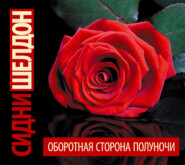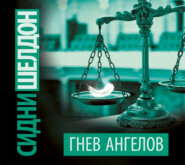По всем вопросам обращайтесь на: info@litportal.ru
(©) 2003-2024.
✖
The Sands of Time
Автор
Год написания книги
2018
Настройки чтения
Размер шрифта
Высота строк
Поля
Chapter Forty-two (#litres_trial_promo)
Chapter Forty-three (#litres_trial_promo)
Chapter Forty-four (#litres_trial_promo)
Afterword (#litres_trial_promo)
Author’s Note (#litres_trial_promo)
Acknowledgement (#litres_trial_promo)
Books by Sidney Sheldon (#litres_trial_promo)
About the Author (#litres_trial_promo)
Copyright (#litres_trial_promo)
About the Publisher (#litres_trial_promo)
Lives of great men all remind us
We can make our lives sublime,
And, departing, leave behind us
Footprints on the Sands of Time.
HENRY WADSWORTH LONGFELLOW
Chapter One (#ulink_df421672-bd31-5966-b72a-44d796760926)
Pamplona, Spain 1976
If the plan goes wrong, we will all die. He went over it again in his mind for the last time, probing, testing, searching for flaws. He could find none. The plan was daring, and it called for careful, split-second timing. If it worked, it would be a spectacular feat, worthy of the great El Cid. If it failed …
Well, the time for worrying is past, Jaime Miró thought philosophically. It’s time for action.
Jaime Miró was a legend, a hero to the Basque people and anathema to the Spanish government. He was six feet tall, with a strong, intelligent face, a muscular body, and brooding dark eyes. Witnesses tended to describe him as taller than he was, darker than he was, fiercer than he was. He was a complex man, a realist who understood the enormous odds against him, a romantic ready to die for what he believed.
Pamplona was a town gone mad. It was the final morning of the running of the bulls, the Fiesta de San Fermin, the annual celebration held from 7 July to the 14th. Thirty thousand visitors had swarmed into the city from all over the world. Some had come merely to watch the dangerous bull-running spectacle, others to prove their manhood by taking part in it, running in front of the charging beasts. All the hotel rooms had long since been taken, and university students from Navarra had bedded down in doorways, bank entrances, cars, the public square, and even the streets and pavements of the town.
The tourists packed the cafés and hotels, watching the noisy, colourful parades of papier mâché gigantes, and listening to the music of the marching bands. Members of the parade wore violet cloaks, some with hoods of green, others garnet, and still others wearing golden hoods. Flowing through the streets, the processions looked like rivers of rainbows. Exploding firecrackers running along poles and wires of the tramways added to the noise and general confusion.
The crowd had come to attend the evening bullfights, but the most spectacular event was the Encierro – the early morning running of the bulls that would fight later in the day.
Ten minutes before midnight in the darkened streets of the lower part of town, the bulls had been driven from the corrales de gas, the reception pens, to run across the river on a bridge to the corral at the bottom of Calle Santo Domingo, where they would be kept for the night. In the morning they would be turned loose to run along the narrow Calle Santo Domingo, penned in the street by wooden barricades at each corner until at the end they would run into the corrals at the Plaza de Hemingway, where they would be held until the afternoon bullfight.
From midnight until 6.00 a.m., the visitors stayed awake, drinking and singing and making love, too excited to sleep. Those who would participate in the running of the bulls wore the red scarves of San Fermin around their throats.
At a quarter to six in the morning, bands started circulating through the streets, playing the stirring music of Navarre. At seven o’clock sharp, a rocket flew into the air to signal that the gates of the corral had been opened. The crowd was filled with feverish anticipation. Moments later a second rocket went up to warn the town that the bulls were running.
What followed was an unforgettable spectacle. First came the sound. It started as a faint, distant ripple on the wind, almost imperceptible, and then it grew louder and louder until it became an explosion of pounding hoofs, and suddenly bursting into view appeared six oxen and six enormous bulls. Each weighing 1,500 pounds, they charged down the Calle Santo Domingo like deadly express trains. Inside the wooden barricades that had been placed at each intersecting street corner to keep the bulls confined to the one street, were hundreds of eager, nervous young men who intended to prove their bravery by facing the maddened animals.
The bulls raced down from the far end of the street, past the Calle Estafeta and the Calle de Javier, past farmacias and clothing stores and fruit markets, towards the Plaza de Hemingway, and there were cries of ‘¡Olé!’ from the frenzied crowd. As the animals charged nearer, a mad scramble began to escape the sharp horns and lethal hoofs. The sudden reality of approaching death made some of the participants run for the safety of doorways and fire escapes. They were followed by taunts of ‘cobardón’ – coward. A few in the path of the bulls stumbled and fell and were quickly hauled to safety.
A small boy and his grandfather were standing behind the barricades, both breathless with the excitement of the spectacle taking place only a few feet from them.
‘Look at them!’ the old man exclaimed. ‘¡Magnífico!’
The little boy shuddered. ‘Tengo miedo, abuelo. I’m afraid.’
The old man put his arm around him. ‘Sí, Manuel. It is frightening. But wonderful, too. I once ran with the bulls. There’s nothing like it. You test yourself against death, and it makes you feel like a man.’
As a rule, it took two minutes for the animals to gallop the 900 yards along the Calle Santo Domingo to the arena, and the moment the bulls were safely in the corral, a third rocket would be sent into the air. On this day, the third rocket did not go off, for an incident occurred that had never happened in Pamplona’s 400-year history of the running of the bulls.
As the animals raced down the narrow street, half a dozen men dressed in the colourful costumes of the feria shifted the wooden barricades and the bulls found themselves forced off the restricted street and turned loose into the heart of the city. What had a moment before been a happy celebration instantly turned into a nightmare. The frenzied beasts charged into the stunned onlookers. The young boy and his grandfather were among the first to die, knocked down and trampled by the charging bulls. Vicious horns sliced into a baby’s pram, killing an infant and sending its mother down to the ground to be crushed. Death was in the air everywhere. The animals crashed into helpless bystanders, knocking down women and children, plunging their long, deadly horns into pedestrians, food stands, statues, sweeping aside everything unlucky enough to be in their path. People were screaming in terror, desperately fighting to get out of the way of the lethal behemoths.
A bright red truck suddenly appeared in the path of the bulls and they turned and charged towards it, down the Calle de Estrella, the street that led to the cárcel, Pamplona’s prison.
The cárcel is a forbidding-looking two-storey stone building with heavily barred windows. There are turrets at each of its four corners, and the red and yellow Spanish flag flies over the door. A stone gate leads to a small courtyard. The second floor of the building consists of a row of cells that holds prisoners condemned to die.
Inside the prison, a heavyset guard in the uniform of the policía armada was leading a priest garbed in plain black robes along the second floor corridor. The policeman carried a sub-machine-gun.
Noting the questioning look in the priest’s eye at the sight of the weapon, the guard said, ‘One can’t be too careful here, Father. We have the scum of the earth on this floor.’
The guard directed the priest to walk through a metal detector very much like those used at airports.
‘I’m sorry, Father, but the rules –’
‘Of course, my son.’
As the priest passed through the security portal, a shrieking siren cut through the corridor. The guard instinctively tightened his grip on his weapon.
The priest turned and smiled back at the guard.
‘My mistake,’ he said as he removed a heavy metal cross that hung from his neck on a silver chain and handed it to the guard. This time as he passed through, the machine was silent. The guard handed the cross back to the priest and the two continued their journey deeper into the bowels of the prison.
The stench in the corridor near the cells was overpowering.
The guard was in a philosophical mood. ‘You know, you’re wasting your time here, Father. These animals have no souls to save.’
‘Still, we must try, my son.’
The guard shook his head. ‘I tell you the gates of hell are waiting to welcome both of them.’
The priest looked at the guard in surprise. ‘Both of them? I was told there were three who needed confession.’
The guard shrugged. ‘We saved you some time. Zamora died in the infirmary this morning. Heart attack.’

















